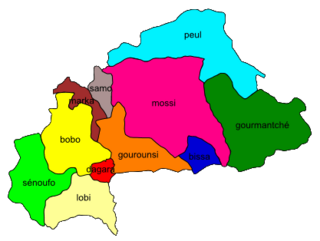Related Research Articles
Most languages of Europe belong to the Indo-European language family. Out of a total European population of 744 million as of 2018, some 94% are native speakers of an Indo-European language; within Indo-European, the three largest phyla are Romance, Germanic, and Slavic with more than 200 million speakers each, between them accounting for close to 90% of Europeans. Smaller phyla of Indo-European found in Europe include Hellenic, Baltic, Albanian, Celtic, Armenian and Indo-Aryan.

Kalinga is a dialect continuum of Kalinga Province in the Philippines, spoken by the Kalinga people, alongside Ilocano. The Banao Itneg variety is not one of the neighboring Itneg languages.

Ifugao or Batad is a Malayo-Polynesian language spoken in the northern valleys of Ifugao, Philippines. It is a member of the Northern Luzon subfamily and is closely related to the Bontoc and Kankanaey languages. It is a dialect continuum, and its four main varieties—such as Tuwali—are sometimes considered separate languages.

Bontoc (Bontok) is the native language of the indigenous Bontoc people of the Mountain Province, in the northern part of the Philippines.

Dagaare is the maternal language of the Dagaaba people in Ghana and Burkina Faso. It has been described as a dialect continuum that also includes Waale and Birifor.
Sisaala (Sissala) is a Gur language cluster spoken in northern Ghana near the town of Tumu and in the neighbouring republic of Burkina Faso. Western Sisaala is intermediate between Burkina and Tumulung Sisaala.
The Ngbandi language is a dialect continuum of the Ubangian family spoken by a half-million or so people in the Democratic Republic of Congo and in the Central African Republic. It is primarily spoken by the Ngbandi people, which included the dictator of what was then known as Zaire, Mobutu Sese Seko.
The Roglai language is a Chamic language of southern Vietnam, spoken by the Raglai people.
Tusya, also spelled Tusiã, Tusian, Toussian and also known as Wín, is a language or languages of Burkina Faso that is of uncertain affiliation within Niger-Congo. It was formerly linked with the Gur languages.

Bobo is a major Mande language of Burkina Faso; the western city of Bobo Dioulasso is named partly for the Bobo people. Bobo consists of:
One is a Torricelli dialect cluster of West Wapei Rural LLG in Sandaun Province, Papua New Guinea.
Birifor is a pair of Gur languages of Burkina Faso and Ghana. There are a few thousand speakers of both varieties, which are not mutually intelligible, in Ivory Coast.
Kawahíva is a Tupi–Guarani dialect cluster of Brazil. The major variety is Tenharim.
Southern Luo is a dialect cluster of Uganda and neighboring countries. Although Southern Luo dialects are mutually intelligible, there are six ethnically and culturally distinct varieties which are considered to be separate languages socially.
Guiyang Miao, also known as Guiyang Hmong, is a Miao language of China. It is named after Guiyang County, Guizhou, though not all varieties are spoken there. The endonym is Hmong, a name it shares with the Hmong language.
Agusan is a Manobo language of northeastern Mindanao in the Philippines.
Tehuacan–Zongolicaa.k.a.Southeastern Puebla Nahuatl is a variety of Nahuatl spoken by ethnic Nahua people in southeastern Puebla state (Tehuacan) and southern Veracruz (Zongolica) in Mexico.
Lohorung, also spelled Lorung, Lohrung or Loharung, is a Kirati languages language of eastern Nepal. It has been described by George van Driem.
Ghale is a Tibeto-Burman language of Nepal. It belongs to the group of Ghale languages. The dialects of Ghale have limited intelligibility: (south) Barpak, Kyaura, Laprak, (north) Khorla, Uiya, Jagat, Philim, Nyak
Atta is an Austronesian dialect cluster spoken by the Aeta (Agta) Negritos of the northern Philippines.
References
- ↑ Northern Nuni at Ethnologue (18th ed., 2015) (subscription required)
Southern Nuni at Ethnologue (18th ed., 2015) (subscription required)